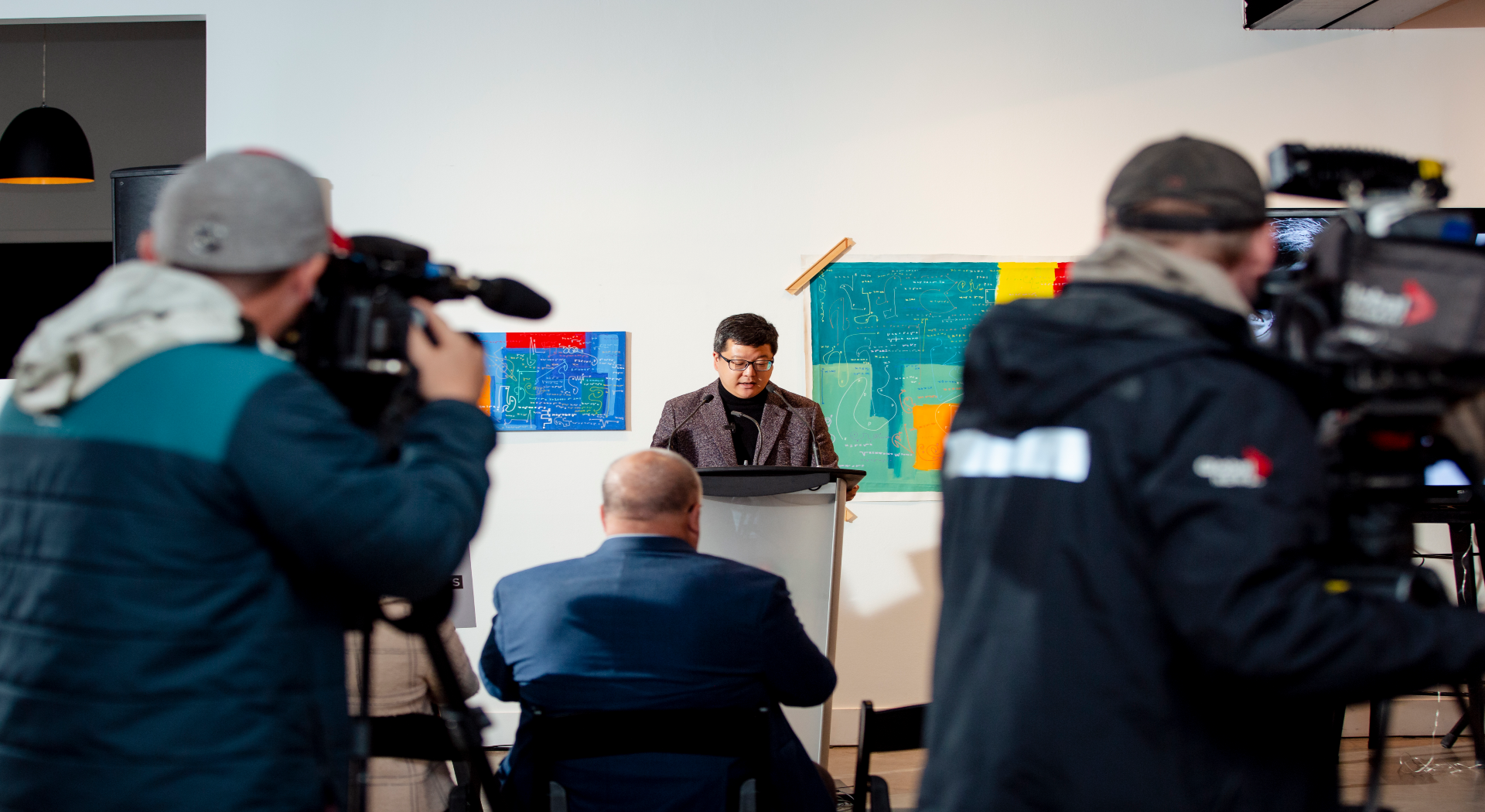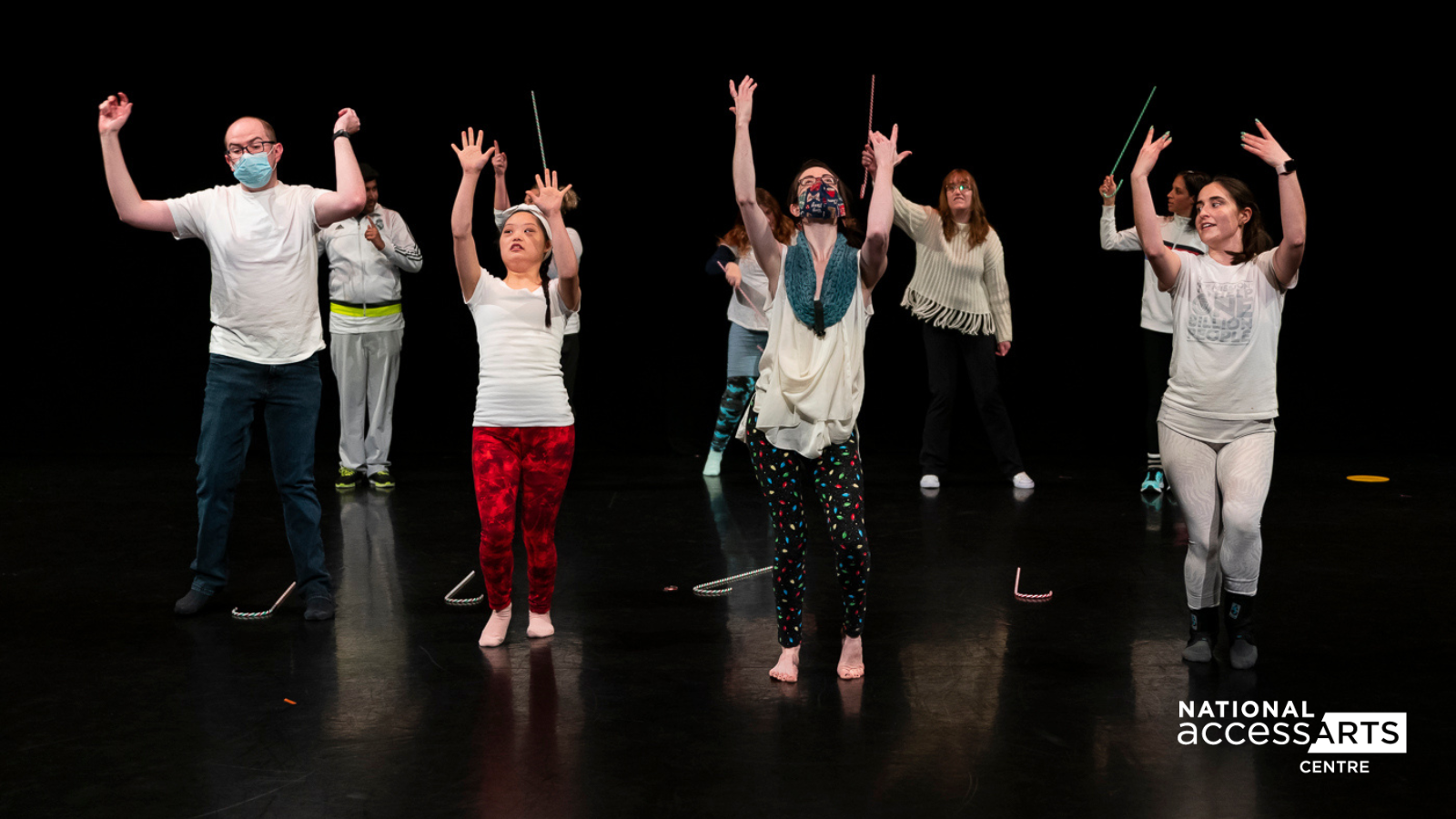Backstage with the dance ensemble
Whether it’s an adopted family or a group of close-knit friends, your found family is the hand-picked pool of people you can turn to in good times and bad. They’re the ones who love and lift you up no matter the circumstances. Sometimes, they’re formed out of necessity. Sometimes, they find you.
The dance ensemble at the National accessArts Centre (NaAC) has been training and performing together for a long time and, like family, has been able to challenge, grow, and learn from each other—the result of which is “magic”, says Chawna Exner, Performing Arts Assistant at the NaAC.
Chawna’s been leading the ensemble since the merger of NaAC and MoMo Movement, but her love of dance goes back much further. After pursuing professional training in the University of Calgary Dance Program, she crossed paths with the art of burlesque. She’s now a prominent burlesque artist (under the stage name Eva Angel), with credits that include the Calgary, Vancouver, and Edmonton International Burlesque Festivals, Wild Mountain Music Fest, and Calgary’s High Performance Rodeo.
For Chawna, leading the ensemble is about more than teaching choreography. It’s about breaking barriers and bringing people together to boost their creative confidence. And it starts the moment they step inside the studio.
The freedom to find new skills
At the National accessArts Centre, rehearsal opens with the name game—an opportunity for new and returning dancers to introduce themselves with a movement that describes their current mood. After verbally introducing themselves and expressing a physical gesture, they pass to the next person. It’s just one way the ensemble creates a welcoming, inclusive, and accessible environment—something Alicia Morrison appreciates.
Alicia’s always wanted to be an on-stage performer. She joined the ensemble in 2018 after a friend—Kyra Newton, artistic director of MoMo Movement (an inclusive dance company that’s now part of the NaAC)—invited her to attend. She found her footing instantly, both as a dancer and a co-facilitator of programs like Gratitude GoGo.
“What I appreciated about that was feeling very, very welcome and spreading my joy to the world,” she says.
A dancer and a storyteller, Alicia’s inspired by the music and the movement around her. She uses dance as a creative influence [learn more] for her story: a sci-fi love story based in medieval times. During the development of the dance film, Moving Pictures / Pictures Moving, Alicia was able to bring her two passions together and create a medieval-inspired costume for her character. The experience opened her eyes to new creative endeavours.
“The dance ensemble gave me the idea for the costume-making role. I plan on learning how to do some stitches and crocheting someday in my art classes. And hopefully, I’ll learn how to use the sewing machine,” she says.
Learning by teaching others
For James Silcock, the ensemble provides both a studio space and a stage to share his talents. He was one of several dancers who participated in a series of improvisation workshops with Daniel Vais, Executive Artistic Director of Drag Syndrome, an inclusive performance troupe for queens and kings with Down Syndrome. After numerous days in the studio, the artists took to the stage in an experimental performance that involved elements of drag, theatre, and contemporary dance.
Called ICONIC, the event was an entry-point into new forms of artistic expression for the dancers. Their performance was so captivating, people were coming to James after the show to find out how they could get involved.
“After the show, we had a party and they came to me to get information. People that wanted to come to the class,” he says.
But it’s not just learning that lights his fire, it’s teaching too. James was one of the first participants in the organization’s disability-led teaching program, a program that gives people living with disabilities an opportunity to develop their teaching practice. He’s taught Creative Movement and Hip Hop and Line Dance, helping artists of all abilities share their talents on stage. Artists like Karin Hazle.
From the studio to the stage
Karin is one of the ensemble’s longest-standing members. She’s been part of the group for over 12 years, and while she likes rehearsing with her fellow dancers, she likes performing even better. She recently gave her first solo performance, with her friends and family—and friends-who-feel-like-family—cheering her on.
Dressed in a flowy costume and fiery-red wig, Karin impressed audiences at the ICONIC event with an enchanting performance inspired by Disney’s The Little Mermaid. It was an impactful moment for Karin, one that has encouraged her to pursue more solo performances in the future.
Growing together
As the ensemble looks forward to finding new ways to grow and learn together, Chawna and the other facilitators are keeping their mission firmly in view: to bring equity and accessibility into dance.
“For me, there’s no right or wrong, but a continuum. We’re always figuring out what works for our folks; how to make the world bend to what we need as a group rather than expecting our artists to change things about themselves,” says Chawna.
“Just like any company, it’s important to get together regularly to work on our skills, keep practicing, and move together as a group. We’re in that in between space where we’re looking at different opportunities right now. There’s a lot of collective brainstorming,” she adds.
That’s where much of the magic comes from, says Alicia. “This family is very exciting. One of my favourite parts of being in the ensemble is teaming up as a dance group, all of our brain power combining.”
We trust each other, adds James. “I like our family.”




